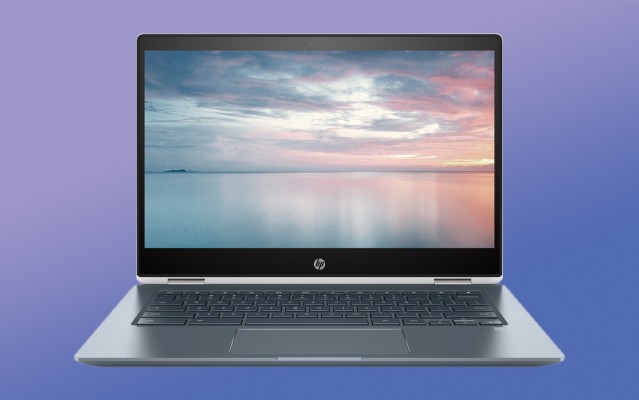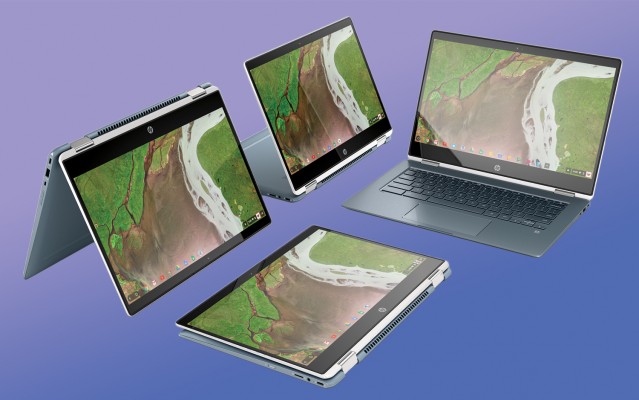The $600 Chromebook x360 14 Is HP’s Thinnest Chromebook Yet
Fresh off unveiling the bold, leather-bonded Spectre Folio, HP announced today the Chromebook x360 14, a stylish 2-in-1 running Chrome OS. The 14-inch Chromebook x360 sits alongside the Chromebook x2 in HP's growing lineup of premium Chromebooks.
The Chromebook x360 is available for pre-order today, and will arrive in stores on Oct 21. The base model costs $599 and comes with an Intel Core i3-8130U CPU, 8GB of RAM and a 64GB eMMC flash storage drive. HP also offers a Core i5 version.
HP continues to emphasize design, and it didn't hold back with the Chromebook x360.
With a blue aluminum keyboard deck and fresh ceramic white paint job, HP's latest laptop is sure to stand out amongst the bulky, plastic devices that make up the current Chromebook market. And at 0.6 inches thick and 3.7 pounds, the HP Chromebook x360 is more portable than other laptops.
The Chromebook x360 sports a 14-inch, 1080p touch screen display bordered by thin bezels. The 2-in-1's flexible hinge allows the screen to fold back into tablet or tent mode so you can watch movies without the keyboard getting in the way. HP continues its partnership with Bang & Olufsen, but we'll reserve our judgment on the laptop's speakers until we jam out with a review unit.
MORE: Best HP Laptops
The Chromebook x360 runs Chrome OS out of the box, and, therefore, supports a range of Android apps.
Sign up to receive The Snapshot, a free special dispatch from Laptop Mag, in your inbox.
Despite being so thin, the Chromebook x360 has an impressive range of ports, including 2 USB 3.1 Type-C ports, a USB 3.1 port, a microSD card slot and a headphone/mic jack.
HP rates the Chromebook x360's battery life at 14 hours, which would make it one of the longest-lasting laptops out there, even when compared to other Chromebooks. However, you shouldn't take these claims as gospel. We'll get a better idea of the Chromebook x360's battery life once we get our hands on one.
Phillip Tracy is the assistant managing editor at Laptop Mag where he reviews laptops, phones and other gadgets while covering the latest industry news. After graduating with a journalism degree from the University of Texas at Austin, Phillip became a tech reporter at the Daily Dot. There, he wrote reviews for a range of gadgets and covered everything from social media trends to cybersecurity. Prior to that, he wrote for RCR Wireless News covering 5G and IoT. When he's not tinkering with devices, you can find Phillip playing video games, reading, traveling or watching soccer.




